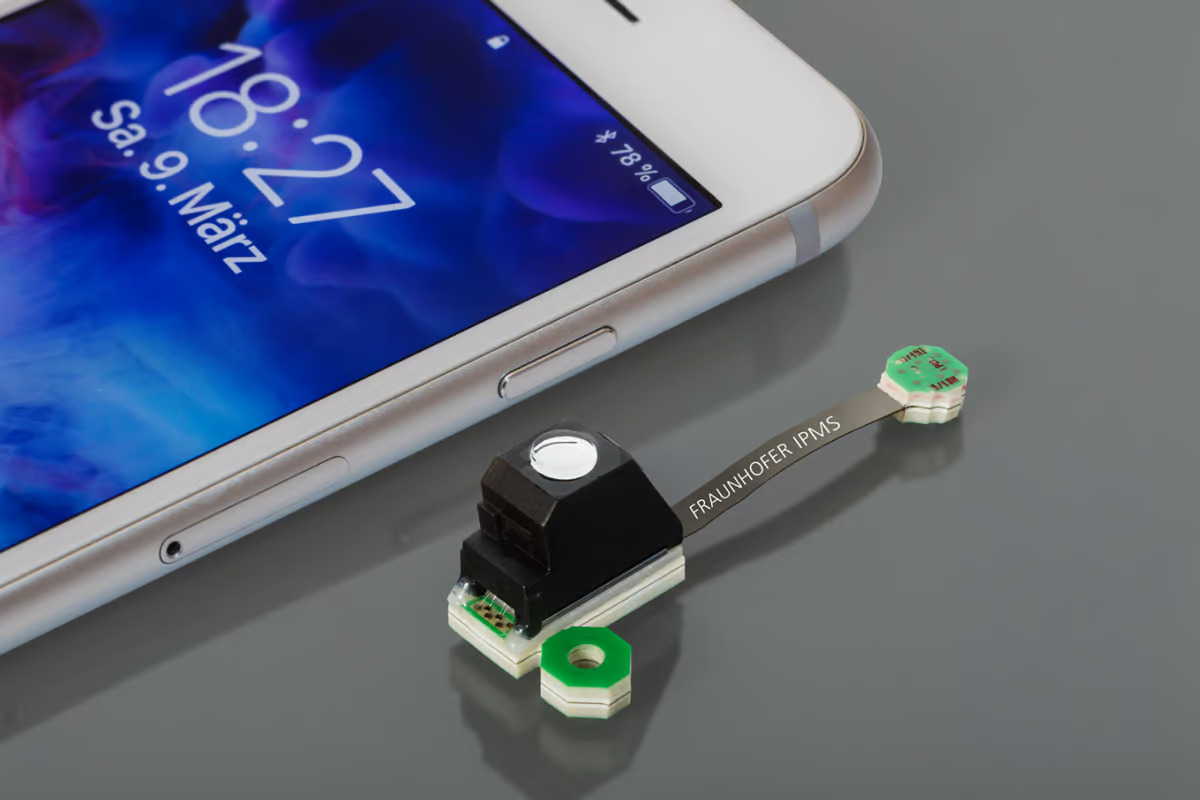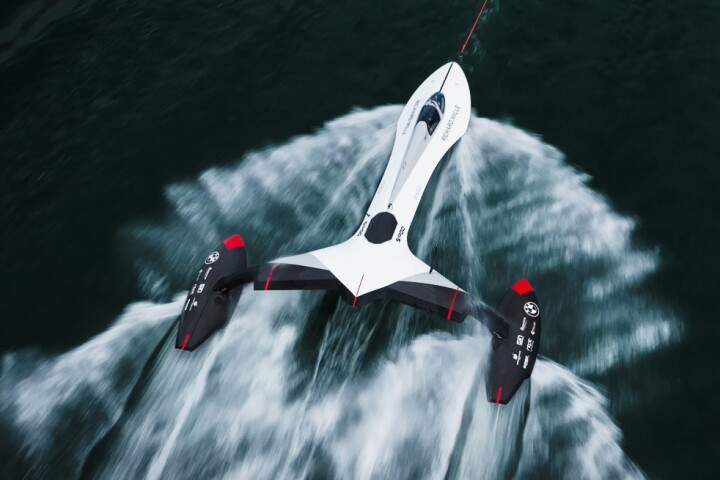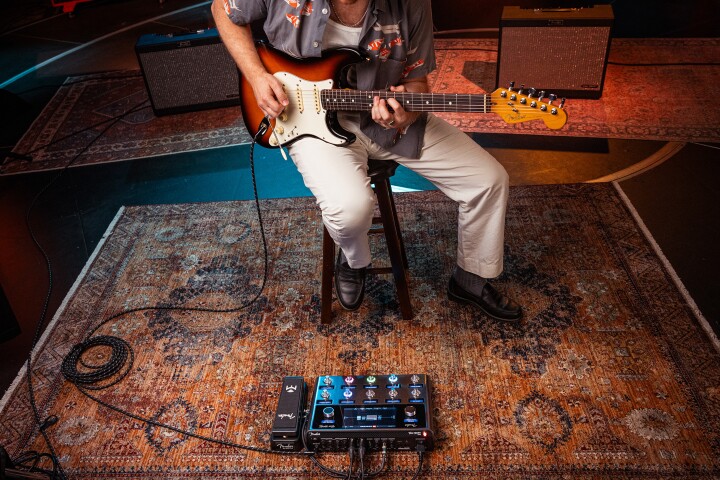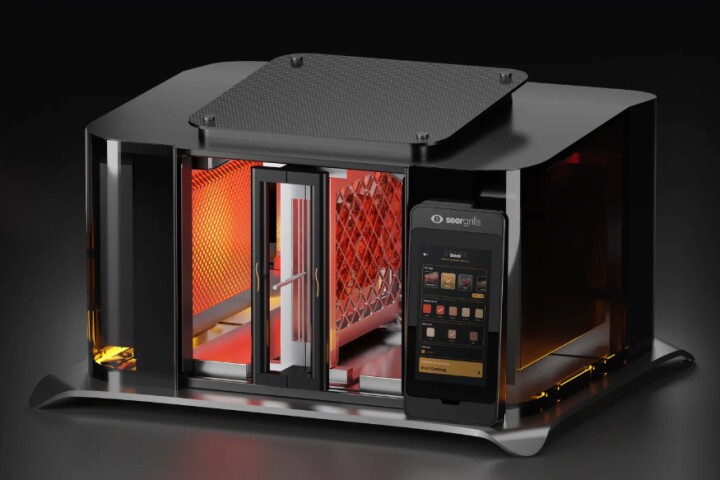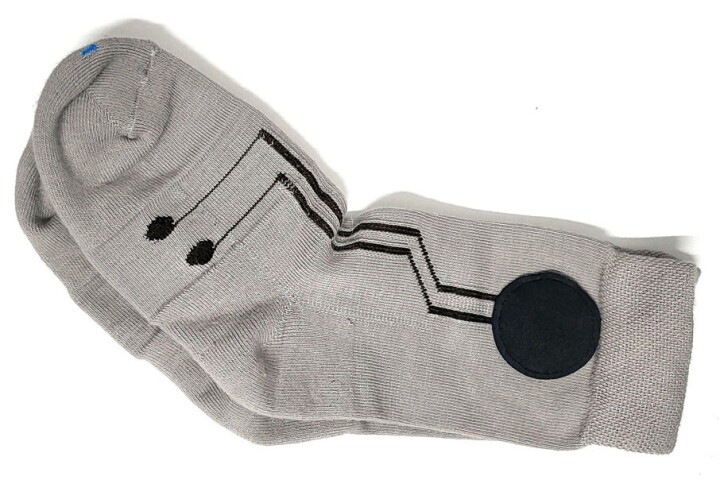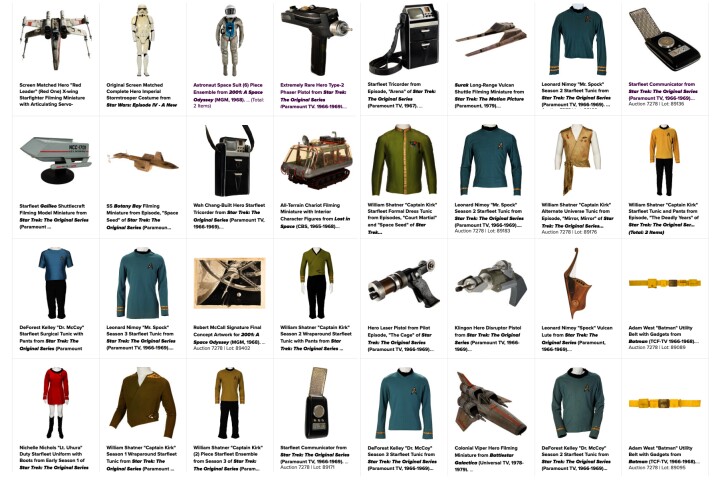The new device might need to be shrunk even more so that it can be readily taken up by phone manufacturers as an internal component. Fraunhofer IPMS
–
The technology known as spectroscopy has been used to analyze everything from whiskey to blood left at crime scenes. Now researchers at Fraunhofer Institute for Photonic Microsystems (IPMS) in Dresden, Germany have developed a spectrograph that can analyze a range of textiles and determine their makeup.
The scanner works in the near infrared range and analyzes light that is reflected from fibers. The device splits this light into wavelengths measuring between 950 and 1,900 nanometers, turns them into electrical signals, and then feeds those signals to an analyzer powered by AI. By comparing the results to a database the AI system is able to quickly return a result describing the materials comprising any piece of fabric.
“The optical resolution is 10 nanometers,” said Heinrich Grüger, research scientist in the Sensoric Micromodules department at Fraunhofer IPMS. “This high resolution means the NIR spectrometer can also use AI to identify mixed fabrics such as items of clothing made from polyester and cotton.”
As a standalone device that measures just 10 mm square (.4 in) and 6.5 mm (0.25 in) thick, the researchers say it could help fabric recycling companies better sort materials for more efficient processing. And, they say, if the tech could be incorporated into mobile phones and linked with camera modules, consumers would be armed with an on-the-spot way to figure out if fabrics being hawked at markets or retail stores really are what the salesperson says they are. Additionally, it could work as a laundry aid, identifying fabrics that had lost their tags and information needed for proper laundry protocols.
Researchers at Fraunhofer IPMS are no strangers to having built small material-analyzing sensors. About a decade ago they announced a tiny spectrometry system using similar technology that could determine the freshness of food, even through packaging.
“We expect spectrometers to develop in the same way that digital cameras did,” said Grüger at the time. “A camera that cost 500 euros 10 years ago is far less capable than the ones you get virtually for free today in your cell phone.”
Source: Fraunhofer
–









